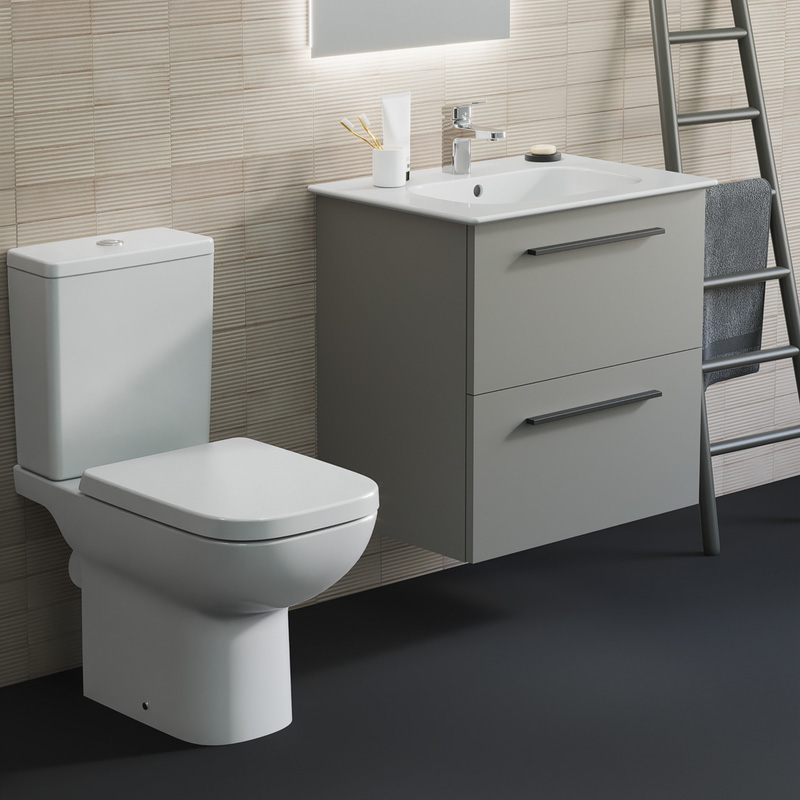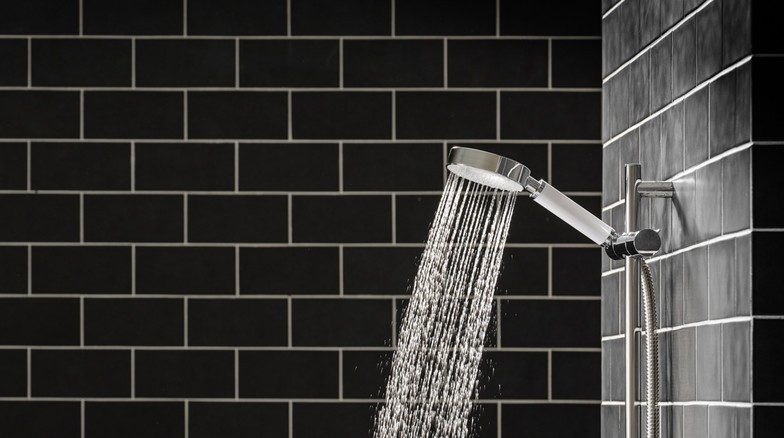Toilets are an essential fixture in any bathroom, and choosing the right one is crucial for comfort, functionality, and aesthetics. When choosing a toilet – whether you’re replacing an existing one or building a brand new bathroom – consider factors such as your personal style, the existing plumbing, and the budget you’re working with.
A toilet is made of four main components. The toilet seat, the cistern that holds water for flushing, the flushing mechanism that releases the water in the tank and the pan where waste is deposited and flushed away. Most of the time, the flushing mechanism is part of the cistern.
Types of Toilets
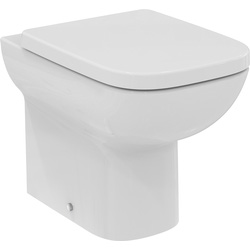
Back-To-Wall Toilets
Back-to-wall toilets offer a sleek and minimalist appearance. They have a hidden cistern, typically placed behind a wall or inside a furniture unit, with a pan (also known as a bowl) that sits flush against the wall or cabinet.
With a cistern behind a partition wall, the sleek design takes up less space than other types, so back-to-wall toilets are perfect for smaller bathrooms and ensuites. They’re easy to clean, as there are no awkward nooks and crannies behind the toilet, and the plumbing is concealed for a clutter-free, modern appearance.
However, installation can be more complicated, and a partition wall or cupboard has to be built behind the toilet if there isn’t one there already. Also, if any work needs to be carried out on the cistern then it can be more difficult to access. You’ll also want to check if the tank (cistern) is included, as they are sometimes sold separately. Also, you’ll need to allow room for the soil pipe to turn left or right within the space.
Advantages
-
Space saving and minimalist
-
Suits contemporary style bathrooms
-
Easy to clean
Things to Consider
-
Installation and future repairs can be more complex
-
Check if the cistern is included
-
Soil pipe needs extra room
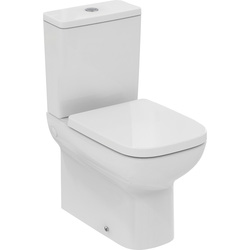
Close-Coupled Toilets
Close-coupled toilets are the most common type found in UK homes. They have a cistern and pan coupled closely together in one complete unit. There are two types of close-coupled toilets: open-backed and fully shrouded (also known as Close Coupled Back To Wall). The open-backed option may have a gap between the back of the pan and the wall, exposing the soil pipe. However, the fully shrouded version hides the soil pipe, providing a streamlined look and making cleaning easier.
These toilets are versatile, coming in a wide variety of styles and sizes to suit any bathroom. Close-coupled toilets are straightforward to install, as no hidden plumbing is required. You’ll also find different types, including Compact Close Coupled toilets which have a shorter projection into the room and are perfect for small bathrooms. Raised Height or Comfort Height Close Coupled toilets can be more comfortable as they’re higher up.
You’ll find that – for open-backed close-coupled toilets – the soil pipe is visible, which is less desirable in modern, minimalist bathrooms. The visible plumbing also leaves more nooks and crannies for dust and dirt to build up that’ll need to be cleaned regularly. However, opting for a fully shrouded close-coupled toilet hides this plumbing, including the soil pipe.
Advantages
-
Wide variety of styles and sizes available
-
Easy to install
Things to Consider
-
Visible soil pipe may not suit modern, minimalist bathrooms
-
More corners that accumulate dust and dirt
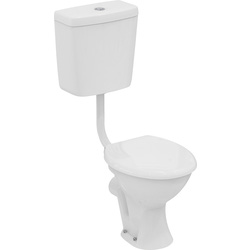
Low-Level Toilets
Low-level toilets have a visible cistern mounted on the wall slightly above the toilet, connected to the pan by a pipe that allows water to run through when flushed. They are designed to suit traditional-style bathrooms and are also common in commercial settings.
These toilets don’t need any of the plumbing hidden, making installation far easier than with concealed cistern toilets. Low-level toilets also fit any types of existing soil pipes, so your soil pipe won’t need to be changed. If your soil pipe is set in a solid floor and cannot be moved, low-level toilets are perfect.
However, the exposed soil pipe can accumulate dirt and dust, making cleaning more challenging. You’ll also need a solid or reinforced wall to fit the cistern to, as it is heavy and could cause a lot of damage if it fell.
Advantages
-
Easy installation as there is no concealed plumbing
-
Fit any type of existing soil pipe
Things to Consider
-
Exposed plumbing can accumulate dust and dirt
-
Solid or reinforced wall needed to support the raised cistern
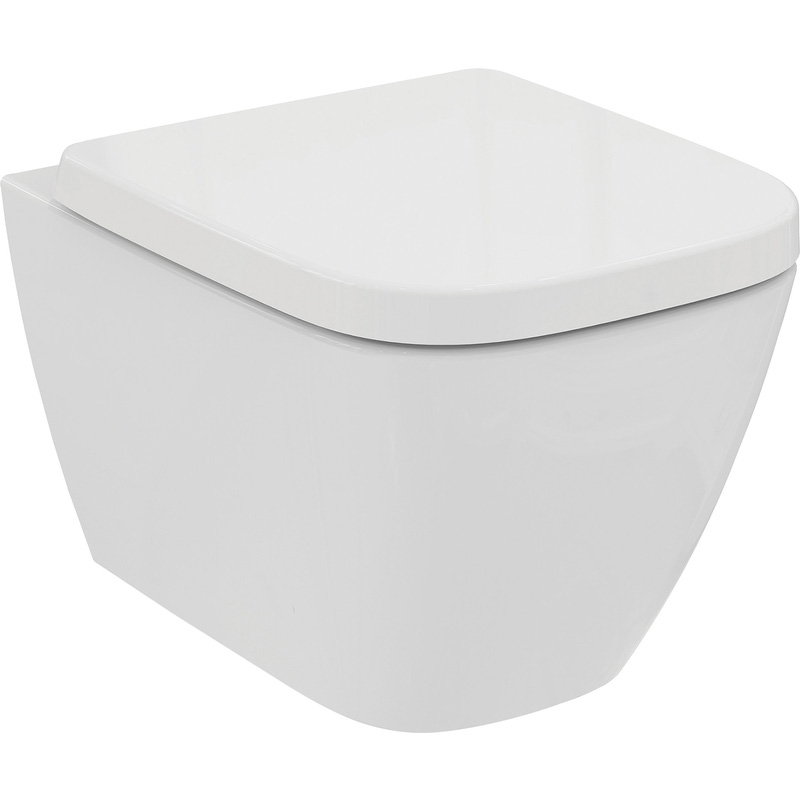
Wall Hung Toilets
Wall-hung toilets provide a sleek and designer look, and perfectly suit modern and minimalist bathrooms, as well as small bathrooms and cloakrooms. These toilets have the cistern hidden behind a wall, and the toilet pan hangs on the wall with no visible foot.
The design of a wall-hung toilet means they take up less space, while also making it easier to clean both the toilet and the floor underneath. The toilet can be fitted to the wall at whatever height is most suitable for the existing plumbing and the users, meaning they’re great for those with mobility issues or people who are shorter or taller than average.
However, they can be more challenging to install, as the cistern must be hidden behind a partition wall and installed on a mounting frame to withstand the weight of a human.
Advantages
-
Take up very little space
-
Easy to clean
-
Can be fitted wherever is best suited for the users
Things to Consider
-
Hidden cistern makes installation more challenging
-
Must be securely fitted to withstand human weight
Key Toilet Features
Toilet Seat Close Type
Toilet seats come in two main types: soft close and standard close. Soft-close toilet seats close silently with minimal force, so they’re convenient and quieter to use. While they are slightly more expensive than standard-close toilet seats, their ease of use and noise reduction make them a popular choice.
Toilet Seat Shape
Toilet seats are available in different shapes, the most common types are round, D-shaped, and square, which are designed to fit the shape of the pan. Round seats are common in traditional bathrooms and are space-efficient. Square and D-shaped seats are suitable for modern bathrooms, with square seats providing a more angular and minimalist look.
Toilet Seat Material
You’ll find toilet seats in a range of material types, primarily plastic or wood. Plastic options include thermoset plastic and thermoplastic – the main difference being that thermoset is more scratch resistant. Wood is less resistant to wear and tear but will be warmer to sit on and will complement natural-style bathrooms.
Toilet Seat Fixing Type
Toilet seat fixings come in two fixing types: bottom fix and top fix. Top fix seats have two bolts which are fed into the edge of the toilet pan and tightened from the top, while bottom fix toilet seats are fitted from the top and tightened underneath with wing nuts. Top fix seats are more common in modern toilets, as they are easier to fit and remove for cleaning. The choice mainly depends on the type of seat you want to install or replace. You’ll also find quick release toilet seats which come off the pan at the press of a button for easy cleaning.
Macerating Toilets
Macerating toilets have an upflush system that liquefies waste before pumping it to the main waste line. They’re ideal when creating new bathrooms where it may be complicated to connect a new soil pipe to take waste to the sewer. While more expensive than standard toilets, they are a cost-effective alternative to installing a new plumbing system.
Cistern Position
Consider whether you want a concealed cistern hidden behind a wall or a standard cistern. Concealed cistern toilets may require a partition wall or furniture unit if not already in place. You may also find that standard cisterns often come at a lower upfront cost and are easier and cheaper to install.
Flushing Mechanism
Toilet flush mechanisms vary from traditional levers to modern push buttons. Push-button flushes are more hygienic and most offer dual flush options to save water, but can be more expensive than standard levers. Both flushing mechanisms work by releasing a gush of water into the pan to force the waste to be washed into the soil pipe. Flush plates are similar to push buttons, but have two flush options on a rectangular plate – which is most commonly fixed to a wall. These are common in commercial bathrooms.
Soil Pipe Direction
When selecting a toilet, check the height and position of your existing soil pipe to ensure compatibility. Close-coupled toilets can connect to soil pipes horizontally, vertically, or to the left or right, while back-to-wall and wall-hung toilets can only connect horizontally or vertically.
Existing Plumbing
Replacing your toilet with a similar model that connects to your existing plumbing system is usually easier and more cost-effective. Ensure that your new toilet is compatible with your current plumbing setup for a seamless installation process. Also, it will be much cheaper and easier to keep the position of the toilet in the bathroom the same, instead of installing new pipes.

